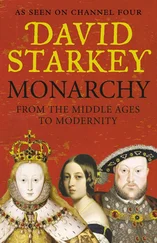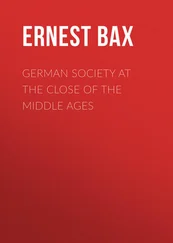The three places marked out to be the most important inland centres in Illyricum were Naissus, Scupi (Uskub), and Ulpiana. We have seen that the great road from Constantinople to Singidunum and the west passed Naissus, which lay near the right bank of the western branch of the Margus. Another road connected Naissus directly with Ratiaria (Widin) on the Danube, while south-westward it was linked by a route passing over the Prepolać saddle with Ulpiana, 8which was on the site of the modern village of Lipljan but corresponded in importance to Priština. This town was situated at the southern end of the Kossovo Polje, a plain about twenty miles long, famous as a battlefield in the later Middle Ages. Through this plain ran a road to Ad Matricem which passed Arsa, close to the modern Novipazar, and then turning westward continued its course by Plevlje and Goradža. Two other roads converged at Ulpiana, one from Scupi, which followed the course of the Lepenac, a tributary of the Vardar, and crossed the Kačanik Pass. The other road led to the Hadriatic: crossing the hills it emerged in the open country watered by the upper streams of the Drilo, and known as Metochia, from which it descended to Scodra (Scutari), whence the coast was reached either at Ulcinium (Dulcigno) or at Lissus (Alessio).
Scupi lay on the great road through the valley of the Vardar which brought Thessalonica into communication with the central districts of Illyricum and the Danube. From this centre Naissus could be reached not only by the Kačanik Pass and Ulpiana, but also by another road which skirted the mountains of Kara Dagh and followed the course of the western Margus. The most important station between Thessalonica and Scupi was Stobi, where a north-eastward road diverged to Pautalia and Sardica, while a cross-road connected Stobi with Heraclea (Monastir).
The land communication of Constantinople and Thessalonica with the ports on the Hadriatic was by the great Via Egnatia. 9Westward of Thessalonica, this road ran through western Macedonia and Epirus by Pella, Edessa (Vodena), Heraclea, Lychnidus (Ochrida), Scampae (El Basan), and Clodiana, where it diverged in a northerly direction to Dyrrhachium and in a southerly to Apollonia and Aulon (Valona). 10
Throughout the greater part of the peninsula, north of the Egnatian Way, Latin had become the general language when the Roman conquest was consolidated, 11except in Thrace south of Mount Haemus and the southern towns of Macedonia near the coast-line, where the Greek tongue continued to be spoken.
§ 2. The Hun Invasions of the Balkan Peninsula (A.D. 441-448)
At the beginning of the reign of Theodosius an invasion of the peninsula by a host of Huns was a prelude and a warning. They were led by Uldin, who boasted that he could subdue the whole earth or even the sun. He captured Castra Martis, 12but as he advanced against Thrace he was deserted by a large multitude of his followers, who joined the Romans in driving their king beyond the Danube. The Romans followed up their victory by defensive precautions. The strong cities in Illyricum were fortified, and new walls were built to protect Byzantium; the fleet on the Danube was increased and improved. But a payment of money was a more effectual barrier against the barbarians than walls, and about A.D. 424 Theodosius consented to pay 350 lbs. of gold to King Rugila.
The tribes of the Huns were ruled each by its own chieftain, but Rugila seems to have brought together all the tribes into a sort of political unity. 13He had established himself between the Theiss and the Danube. The treaty which the government of Ravenna made with Rugila, when the Huns withdrew from Italy in A.D. 425 after the subjugation of the tyrant John, seems to have included the provision that the Huns should evacuate the Pannonian province of Valeria which they had occupied for forty-five years. 14But soon afterwards a new arrangement was made by which another part of Pannonia was surrendered to them, apparently districts on the lower Save, 15but not including Sirmium. We may conjecture that this concession was made by Aetius in return for Rugila’s help in A.D. 433. 16
Rugila died soon after this, 17and he was succeeded by his nephews Bleda and Attila, 18the sons of Mundiuch, as joint rulers. Bleda played no part on the stage of history. Attila was a leading actor for twenty years, and his name is still almost a household word. He was not well favoured. His features, according to a Gothic historian, “bore the stamp of his origin; and the portrait of Attila exhibited the genuine deformity of a modern Kalmuck: a large head, a swarthy complexion, small, deep-seated eyes, a flat nose, a few hairs in the place of a beard, broad shoulders, and a short square body of nervous strength though of a disproportioned form. The haughty step and demeanour of the king of the Huns expressed the consciousness of his superiority above the rest of mankind, and he had the custom of fiercely rolling his eyes as if he wished to enjoy the terror which he inspired.” 19He was versed in all the arts of diplomacy, but the chief aim of his policy was plunder. He was far less cruel than the great Mongolian conqueror of the thirteenth century, Chingiz Khan, with whom he has sometimes been compared; he was capable of pity and could sometimes pardon his enemies.
Attila had some reason for his haughty disdain if he could trace his line of ancestry back for a thousand years and was directly descended from the great chieftains of the Hiung-nu, 20whose names have been recorded by early Chinese writers. And if we accept this descent as a genuine tradition, we can infer that he was not of pure Turkish blood. Some of his forefathers had married Chinese princesses, and there may also have been an admixture of the blood of Indo-Scythians. 21
At the beginning of the new reign several points of dispute which had arisen between Rugila and Theodosius were settled. The settlement was entirely to the advantage of the Huns. The Imperial government undertook to double the annual payment, which was thus raised to 700 lbs. of gold; not to receive Hun deserters; to surrender all those who had already deserted; to restore or pay a ransom for Roman prisoners who had escaped; not to form an alliance with any barbarian people at war with the Huns; and to place no restrictions on the trade between the two peoples. The prohibition of receiving fugitives from Attila’s empire was particularly important, because the Roman army was largely recruited from barbarians beyond the Danube.
During the early years of his reign, from A.D. 434 to 441, he seems to have been engaged in extending his power in the east towards the Caucasian Mountains. But in A.D. 441 an irresistible opportunity offered itself for attacking the provinces of Theodosius, for in that year the Imperial armies were engaged in operations against both the Vandals and the Persians.
He condescended to allege reasons for his aggression. He complained that the tribute had not been regularly paid, and that deserters had not been restored. When the Imperial government disregarded his complaints, 22he appeared on the Danube and laid siege to Ratiaria. Here Roman ambassadors arrived to remonstrate with him for breaking the peace. He replied by alleging that the bishop of Margus had entered the land of the Huns and robbed treasures from the tombs of their kings, and he demanded the surrender of these treasures as well as of deserters. The negotiations broke down, and, having captured and plundered Ratiaria, the Hunnic horsemen rode up the course of the Danube to take the great towns on the banks. Viminacium and Singidunum itself were overwhelmed in the onslaught. Margus, which faces Constantia on the opposite side of the river, fell by treachery; the same bishop whom Attila accused as a grave-robber betrayed a Roman town and its Christian inhabitants to the cruelty of the heathen destroyer. Advancing up the valley of the Margus, the invaders halted before the walls of Naissus, and though the inhabitants made a brave defence, the place yielded to the machines of Attila and the missiles of a countless host. Then the marauders rode south-eastward and approached Constantinople. He did not venture to attack the capital, but he took Philippopolis and Arcadiopolis and the fort of Athyras. 23
Читать дальше












